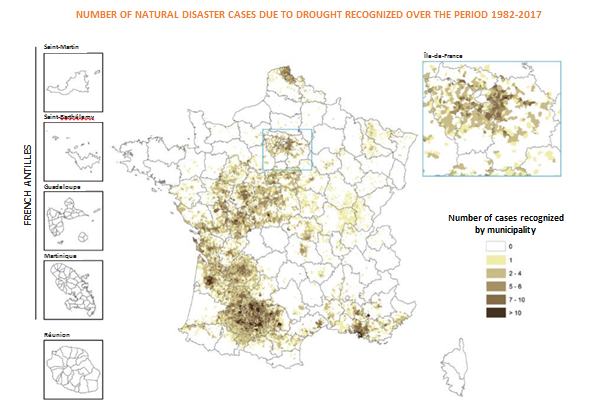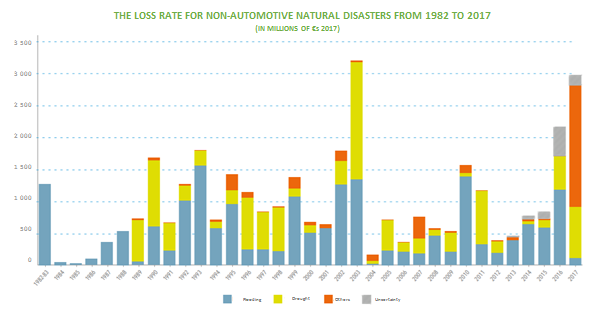Drought in France is now a high priority for insurance companies.
Over the past few weeks, temperatures have soared and new measures are being put in place to deal with the phenomenon. The persistent heat has caused drought and water shortages with over 60 départements, restricting water usage to drinking, health and sanitation.
The electricity supply from France’s nuclear power plants has been affected due to the rise in temperature in its water supply. Electricité de France SA has cut power supply by 55% in some plants because the water used to cool the reactors is drawn from rivers which are now too hot.
In the personal lines world, insurers have to cover damage resulting from drought and soil rehydration under the mandatory legal guarantee “natural disasters.”
Policies cover damage for material (structural) damage to buildings caused by ground movement. The problems can occur several months after the climactic event and can trigger cover if an order recognizing the state of natural disaster is issued.
As these climate episodes multiply, the number of claims increases considerably, some of which won’t be notified until 2021.
How is the risk increasing across France? The graph below shows the number of natural / CAT losses caused by drought over the period 1982-2017:

The South-West, the Centre region, Île-de-France and the Nord departments have been most affected by drought.
The year 2003 was the worst drought in the period. Drought accounts for 33% of the natural CAT loss ratio covered by the scheme. The graph below shows the breakdown of these losses:

The French departments most affected by a Natural Disaster order are the Gers (32) and Tarn-et-Garonne (82) because they are the most concerned by the drought.
Last year, the country was heavily affected by drought in the South-West and South-East regions.
2019 has already seen record high temperatures.
The “Natural Disasters” compensation scheme as applicable to drought
In France, the compensation scheme for natural disasters became law in July 1982, which allowed both companies and individuals the opportunity to be compensated for any losses caused by natural disasters. Before 1982, there was a lack of coverage and most of the country was very poorly insured.
The territories covered by the scheme are metropolitan France, Martinique, Guadeloupe, Réunion Island, French Guiana, Saint Pierre and Miquelon, but it does not apply to the Overseas territories.
The system incorporates a principle of responsibility characterized by a prevention system known as the PPR (Plan de prévention des risques) and deductibles set by the State, which are mandatory and non-redeemable. These franchises can also be adapted in municipalities with a PPR to foster effective implementation for better local risk management.
The Natural Disaster coverage is mandatory in all property and casualty insurance policies. Almost all victims of Natural Disasters are covered.
Several hazards are covered by this regime, such as ground movement including drought, if it was the determining cause of the damage.
For example, “drought is not the determining cause of the damage suffered if it is not established that it is the determining cause of cracks that appeared before its appearance and that could have been prevented by a modification to the design of the foundations given the location of the structure on a steep slope” (Cass. 2nd Civ. 3 June 2010).
The Sedgwick team is ready and prepared to deal with a large increase in claims, and to provide specific support for the policyholder
The technical expertise of our claims adjusters is respected by the insurance companies that we work with. The psychological impact of this type of loss means that our operations must also include specific support for policyholders.
This fully meets insurers’ demands for fast and efficient management, whilst providing high quality customer support at the same time.
The use of digital solutions such as video expertise helps us to qualify records and handle simple cases.
The aim is clear: to expedite the management process while improving customer satisfaction and providing real added value with our expertise and customer service. With a team of 50 people in Sedgwick France, made up of specialist experts, coordinators, claims managers and lawyers, we are already in place to handle a loss rate that, according to estimates, will triple in the next 20 years.